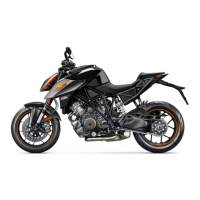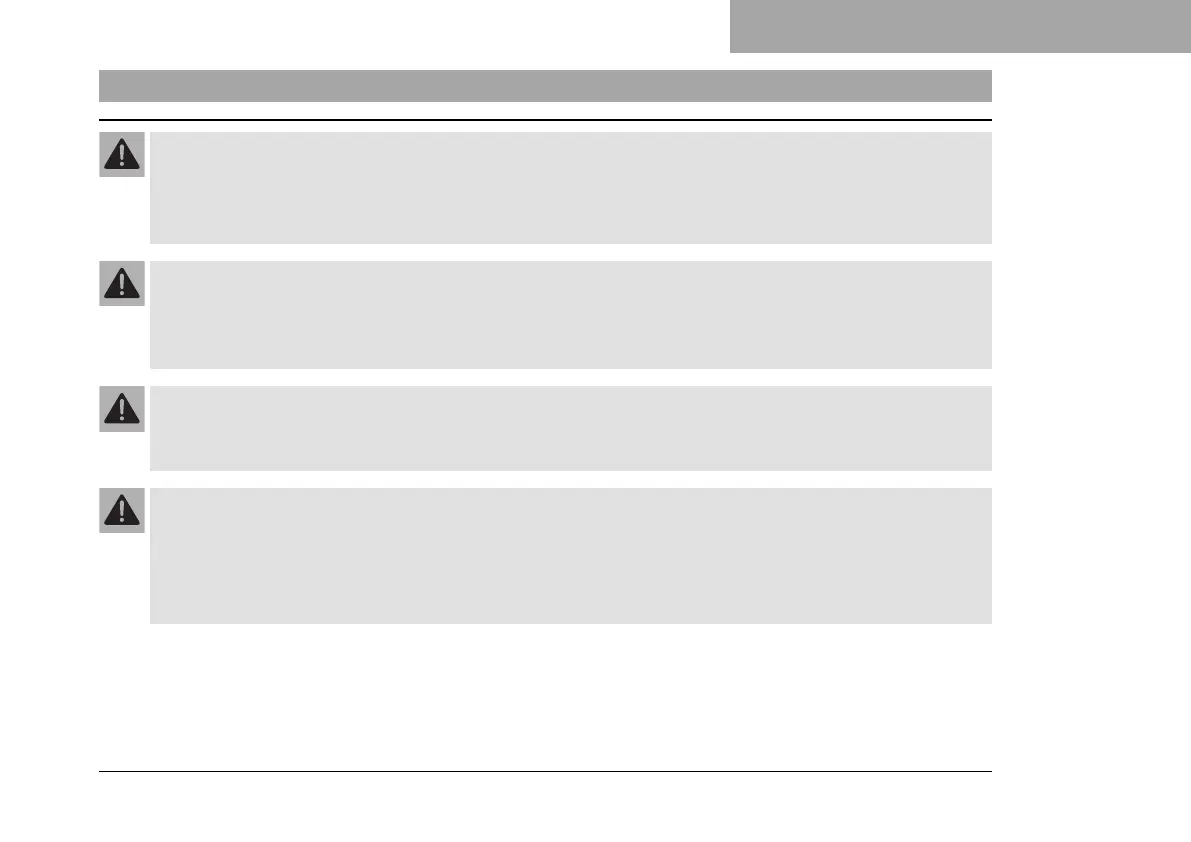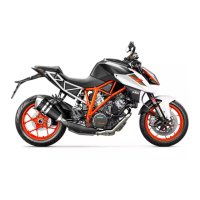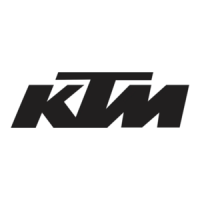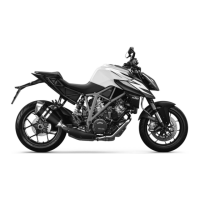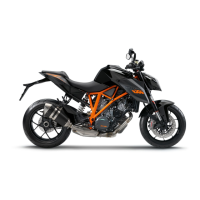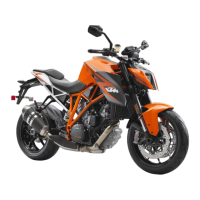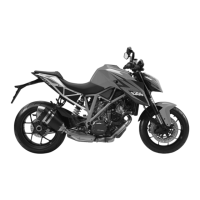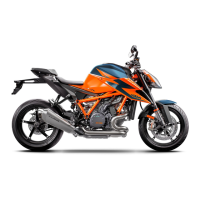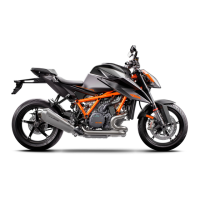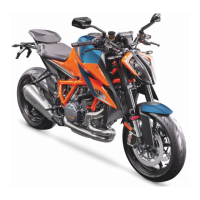RIDING INSTRUCTIONS 10
125
10.7 Shifting, riding
Warning
Danger of accidents Abrupt load alterations can cause the vehicle to get out of control.
– Avoid abrupt load alterations and sudden braking actions.
– Adapt your speed to the road conditions.
Warning
Danger of accidents If you change down at high engine speed, the rear wheel blocks and the engine
races.
– Do not change into a low gear at high engine speed.
Warning
Danger of accidents Adjustments to the vehicle distract attention from traffic activity.
– Make all adjustments when the vehicle is at a standstill.
Warning
Risk of injury The passenger may fall from the motorcycle if they conduct themselves incorrectly.
– Ensure that the passenger sits correctly on the passenger seat, places his or her feet on the passenger
foot rest and holds on to the rider or the grab handles.
– Note the regulations governing the minimum age of passengers in your country.
